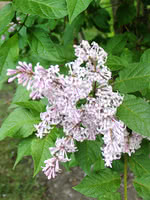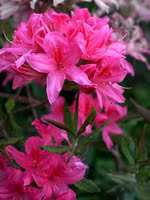Mon-Fri 9am - 5pm Mountain time
Villosa Lilac vs Rosy Lights Rhododendron (Azalea)
Syringa villosa
Rhododendron x Rosy Lights
CUSTOM GROW
Popular Hedge Species!
Villosa Lilac is a relatively large and cold hardy shrub. It provides excellent privacy and wind protection.
Its fragrant, pink flowers grow in clusters at the end of its branches during mid to late summer and fade to a light pink over time. Villosa Lilac grows quickly and is drought resistant, making it suitable for the outer row of a shelterbelt. Its roots are non-suckering and it does not compete with nearby crops.
If you alternate Villosa Lilac and Common Purple Lilac in your hedge, your hedge will flower for more of the summer than if you plant either Lilac on its own.
Note: Villosa Lilac is more salt-tolerant than most of our stock.
Rosy Lights Rhododendron is the next flowering, deciduous shrub you need in your garden. It is incredibly cold hardy and produces fragrant, bright pink blooms in late spring. Pruning is recommended after the flowers are finished to control the size and shape of this shrub.
Try Rosy Lights Rhododendron when planning your next hedge/screen, or plant it on its own as a striking accent plant. Part of the Northern Lights Series.
Villosa Lilac Quick Facts
Rosy Lights Rhododendron (Azalea) Quick Facts
Toxicity: All parts of a rhododendron bush, including the leaves, stems and blooms, are toxic to cats, dogs, and horses.
In row spacing: 0.9 m (3 ft)

